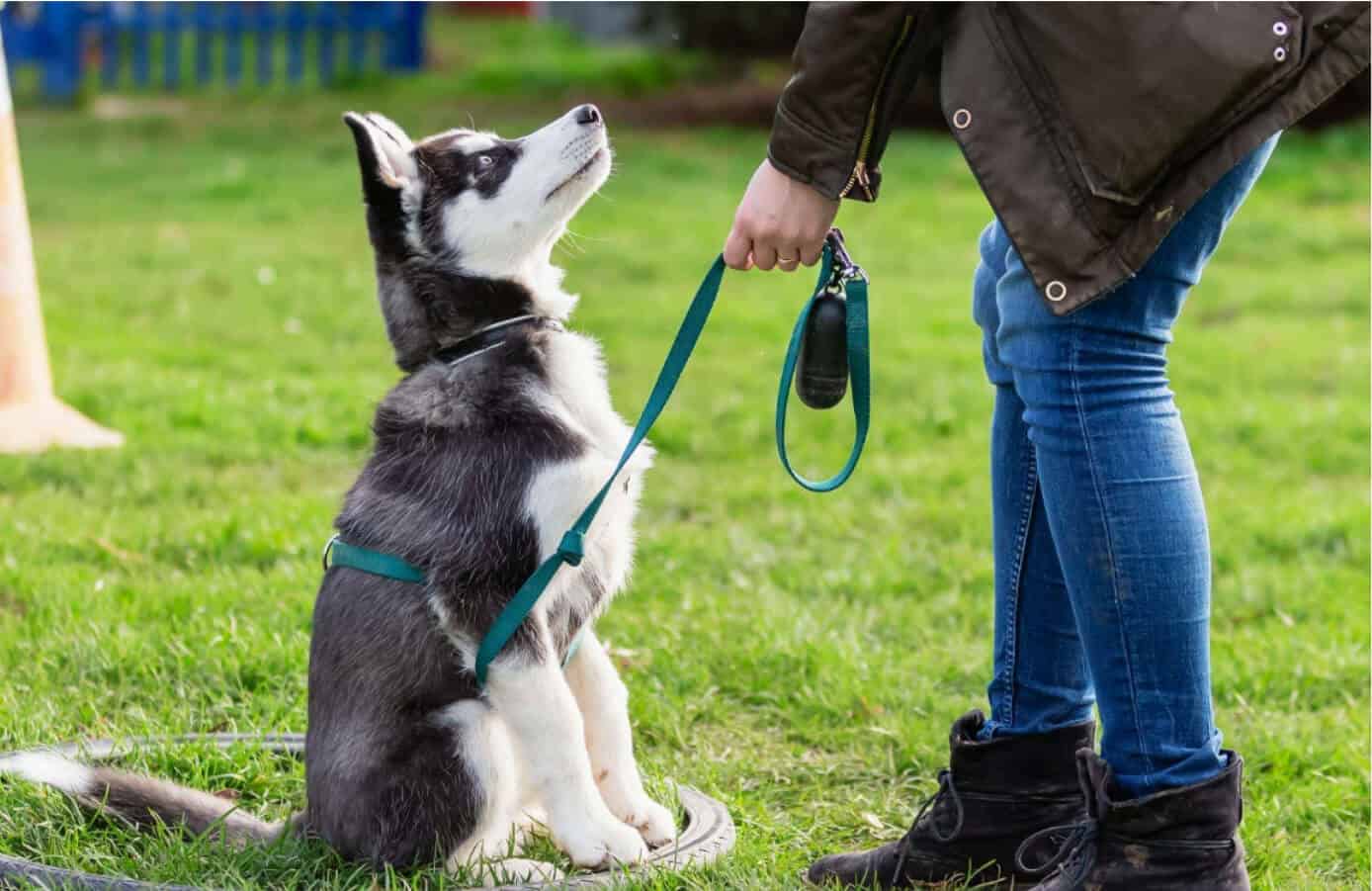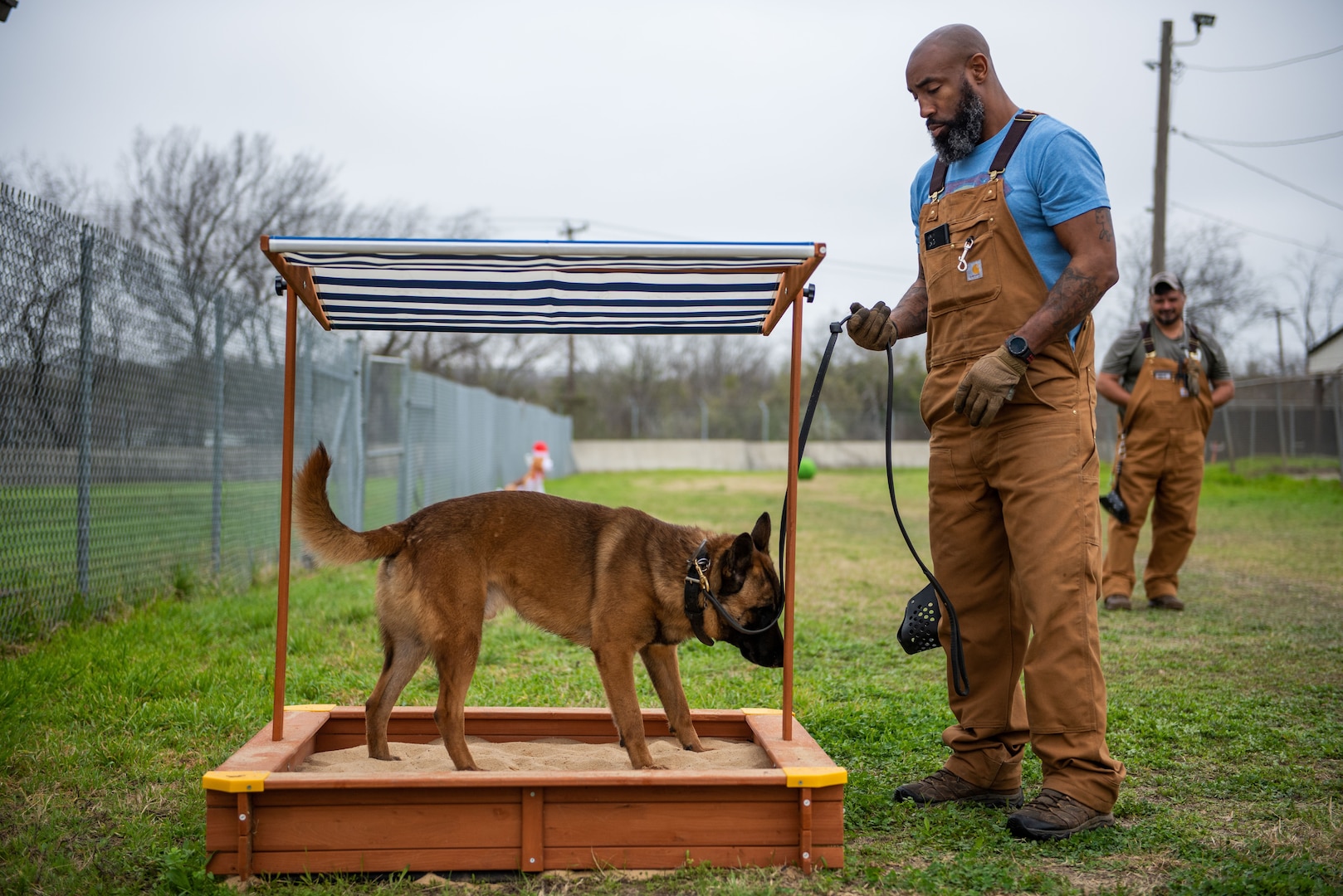Transform Your Dog's Behavior with These Proven Dog Training Methods
Transform Your Dog's Behavior with These Proven Dog Training Methods
Blog Article
Beginner's Guide to Effective Pet Dog Training at Home
Successfully educating a pet dog at home requires a nuanced understanding of canine habits and reliable interaction techniques. Developing clear training goals, utilizing premium rewards, and keeping uniformity across family members are vital components. Integrating training into daily regimens can enhance both engagement and retention.
Comprehending Dog Behavior
Understanding dog habits is essential for efficient training and fostering a harmonious connection between people and their canine friends. Dogs connect mostly through body movement, vocalizations, and facial expressions, making it essential for proprietors to translate these signals properly. Acknowledging actions such as tail wagging, growling, or cring can provide understandings into a pet's emotional state and objectives.

Usual behavioral concerns, such as aggressiveness, anxiousness, or too much barking, commonly come from misconceptions or unmet requirements. Observing and resolving these problems immediately can protect against acceleration and guarantee a positive training experience. By promoting a deep understanding of pet dog actions, proprietors can customize their training techniques to match their canine friends, inevitably resulting in a well-behaved and satisfied animal.
Important Training Tools
A well-appointed training space can dramatically improve the effectiveness of pet dog training in your home. Vital training tools make certain that both the canine and the trainer can participate in effective sessions that cultivate knowing and bonding.

Spending in a strong leash and a comfy, well-fitting collar or harness is important for safety and security and control. These tools help establish boundaries and ensure the canine stays protected throughout training. Additionally, a designated training area, without interruptions, help focus for both the dog and the fitness instructor.
Training aids such as training pads, cones, or dexterity equipment can also boost the experience by presenting variety and challenges. Last but not least, having a notebook or digital application for tracking development can be very useful, enabling you to keep in mind successes and locations for improvement. Making use of these essential tools will certainly produce a positive training atmosphere and lay the foundation for reliable discovering.
Developing a Training Regimen
Developing a consistent training routine is vital for reliable pet training at home. A well-structured routine not only helps in enhancing wanted actions however also offers your pet with a complacency and predictability. To develop an effective training regular, start by identifying particular training objectives, such as standard commands, chain strolling, or house-breaking.
Select a designated time each day for training sessions, ideally when your pet is alert and receptive. Procedure ought to be brief, roughly 5 to 15 minutes, to keep emphasis and stop fatigue. Uniformity in timing and atmosphere will certainly find out this here enhance your canine's learning experience.
Integrate training into day-to-day tasks to reinforce abilities. Practice commands throughout walks or mealtime, which integrates finding out into all-natural routines. Additionally, stay versatile and readjust the routine as needed, accommodating your pet's energy levels and state of mind.
Favorable Reinforcement Techniques
Favorable support methods are essential to reliable dog training, promoting desired habits via incentives instead than punishment. This approach uses positive stimuli, such as treats, appreciation, or look at more info play, to encourage pets to repeat particular activities. The foundation of this approach is timing; benefits ought to be offered promptly adhering to the desired habits to produce a clear association.
When applying positive reinforcement, it is necessary to choose rewards that are motivating for your pet. High-value treats, such as small items of poultry or cheese, can be especially reliable during training sessions. Additionally, differing the incentives can keep your canine's passion and interest.
Begin with easy commands, like "rest" or "remain," and progressively progression to more intricate jobs. Consistency is vital; make certain that all household members use the very same commands and incentive systems to stay clear of confusion.
Furthermore, it is vital to continue to be patient and prevent aggravation. Canines, like people, discover at their own speed. By cultivating a helpful training environment via positive reinforcement, you can improve your dog's knowing experience while reinforcing the bond in between you and your fuzzy buddy, laying the foundation for successful training results.
Typical Educating Obstacles
While educating a pet at home can be a satisfying experience, it typically features a collection of typical obstacles that can test both persistence and uniformity. look at here One common issue is disturbance. Pets might become quickly averted by noises, motions, or also aromas in their environment, making it tough to preserve their focus during training sessions.
One more challenge is incongruity in commands and support. It can impede and puzzle the dog progress if household members make use of various cues or incentives. Developing a unified strategy is essential for effective communication.
Additionally, dogs can experience frustration or stress and anxiety, especially if they do not comprehend what is anticipated of them. This can bring about undesirable actions, such as eating or barking.
Ultimately, the timing of reinforcement is vital (Dog training). Delayed rewards can decrease the effectiveness of favorable support, as dogs may fall short to connect the habits with the reward
Getting over these obstacles needs dedication, clear communication, and a structured training plan. Recognizing and resolving these typical challenges will pave the means for a more effective and delightful training experience in your home.
Conclusion
In final thought, successful canine training at home requires an extensive understanding of canine habits and reliable communication approaches. By establishing clear training objectives and using top quality deals with together with positive support, the training procedure ends up being extra gratifying for both the dog and the instructor. Uniformity, flexibility, and patience are essential parts that help with discovering. Ultimately, integrating training right into day-to-day routines enhances the bond between canine and proprietor, making the experience both pleasurable and efficient.
Establishing a consistent training routine is necessary for efficient canine training at home.Positive reinforcement strategies are fundamental to reliable pet training, advertising wanted actions via benefits instead than punishment (Dog training). By fostering a supportive training setting with favorable support, you can enhance your pet dog's discovering experience while strengthening the bond in between you and your fuzzy companion, laying the foundation for successful training results
In conclusion, effective dog training at home requires a comprehensive understanding of canine actions and reliable communication strategies. By establishing clear training goals and utilizing high-quality deals with along with favorable reinforcement, the training process comes to be extra gratifying for both the pet and the trainer.
Report this page